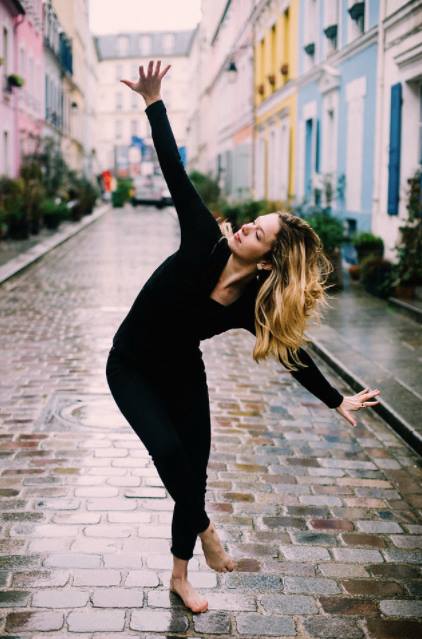German Expressionist Dance
The German strain of expressionist dance has been regarded as a contemporary art-form that embodies the movement of inner-being. The emergence of modern dance began as an adverse reaction to traditional ballet settings. The composition of the dance pieces were intended for both the dancer and the choreographer to join as one collaborative, artist.
During the World Wars, Germany became a major epicenter for the performative material of modern dance. In many dance companies in Germany, dance was a direct representation of the time period. As an attempt to transfix the emotional degradation of the cultural and historical chaos embodying the nation-state, dance became physical and volatile in the texture and narrative of its performance pieces. This can be seen in the poetic makeup of Dance pieces in contemporary France as well.
Expressionism was an art movement brought on by the tragedy of the World Wars in Germany. It is a movement that incorporated and showcased the ugly, horrific and versatile emotional, societal and cultural consequences of mass genocide, fascism and governmental corruption.
Postmodern contemporary dancers have taken this creative process and balanced the ideology within a contemporary, contextual lens.
An example of this artistic bewitchment was seen by leading German choreographers like Pina Bausch. Bausch’s work is known for her raw expression and enigmatic characterization of unconscious emotional processing. She focuses on cultivating the intermediary responses of individuals unfelt, unprocessed and unexamined emotional experiences. She taps into an internal narrative that creates a safe world for individuals to examine and feel her work up close.
Postmodern Therapeutic Considerations
In working with dance in regards to therapeutic relevancy, it appears that the emotional processing that is needed to transfix the audience, in post-modern dance, is still the same emotional catharsis that is needed for deep inner-work. Dance is an artistic mechanism that could be the basis for what is called, “active imagination” in depth psychology. A beginning Dance Movement pioneer was, Mary Starks, who received her diploma from the Wigman School in Germany and also was a student of Martha Graham.
She used personal analysis with Hilde Kirsch in Los Angeles and studied at the Jung Institute in Zurich which resulted in the historic conceptualization and developmental dance-movement approach called authentic movement or movement-in-depth. She speaks to this emotional representation in her paper entitled “Reflections on a Metamorphosis” (1968), she told the story of this transition:
It was an important day when I recognized that I did not teach Dance, I taught People…. It indicated a possibility that my primary interest might have to do with process, not results, that it might not be art I was after but another kind of human development. (p. 273)
She describes this experience as the following,
“I move” is the clear knowledge that 1, personally, am moving. The opposite of this is the sudden and astonishing moment when “I am moved.” It is a moment when the ego gives up control, stops choosing, stops exerting demands, allowing the Self to take over moving the physical body as it will. it is a moment of unpremeditated surrender that cannot be explained, repeated exactly, sought for, or tried out. (1979, p. 57)
Dance as a Violent Language – Corrective Emotional Processing
In terms of identifying the relationship between modern dance and Jungian psychology, it appears that dance has been immersed for trauma survivors, as seen in the expressionist art movement of German World War survivors, that the language of dance can be violent. The use of dance can be administered in the same veracity that sand play, projective assessments or other forms of art therapies can be administered. All are a nonverbal, symbolic process that usually takes place within the individual’s core sense of processing. How they experience or relate to their inner-working is solely based upon the manifestation of the physical movement and the individuals inner-readiness to convey the complexity of their emotional reality.
In movement, the unconscious appears to manifest itself into two diverse ways: in pictorial images and somatic sensations. Some movers might enact the unconscious through the stream of dynamic visualizations, while others may relate the unconscious experience primarily through body movement. However, the movement process is able to accurately dislodge the hidden experiences of trauma as the individual is able to tell their story through the subconscious subliminal.
As we learn to listen and respond to the movements and the visual images, our attention usually fluctuates back and forth. Each realm may constellate and enrich the other. A woman describes a movement experience that has the quality of such a dialectic:
Then, the image of the diamond came in front of my eyes. it grew larger, until I could see through it with both eyes. it showed me a vision of everything broken up by its facets. The diamond grew larger, until I was inside it looking out. The light was bright-almost golden. I bathed in it and felt that it was a healing kind of light. Now, my body shape took on the diamond’s many facets. I was myself, my own shape, but each part of me had many cut surfaces. it was as if I could “see” through the myriad facets of all of me. There was a sense of wonder and suspension and peacefulness.
What does modern dance look like in our relationships with self?
In layman’s terms, if someone upsets you and you don’t know how to deal with it physical expression while investigating emotional realities is important. In all reality, dancing can help regulate our need to act out and shift blame onto others. Dance is an appropriate therapeutic model that allows individuals to identify with what they’re feeling and manifest their emotional dysregulation into a healthy set of informal verbalization. If we’re experiencing negative emotions, dance allows the individual to experience what they mean without impacting their relationship with themselves and others.
a.k.a. someone upsets you – JUST DANCE!







Read 0 comments and reply